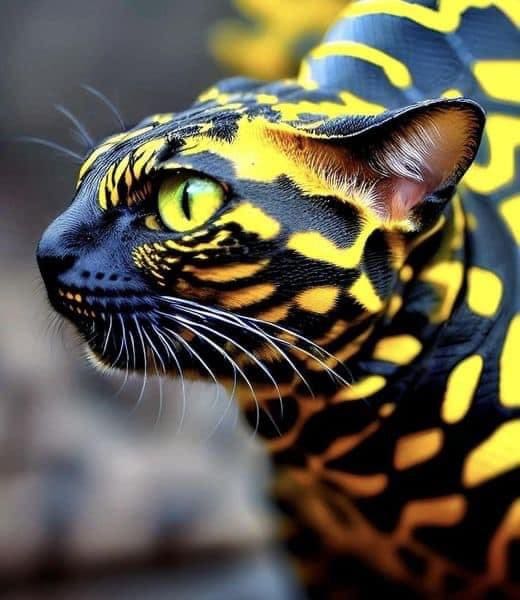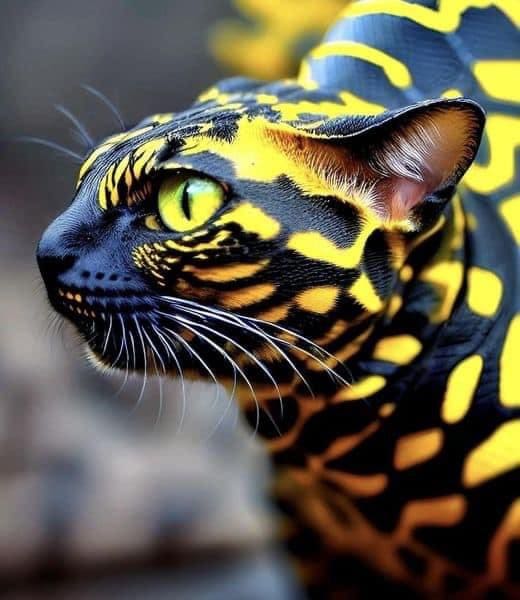
Amazon Snake Cat
The social media is going insane after finding this mysterious creature apparently called as “Serpens Catus” or “Amazon Snake Cat”. The black cat having bright yellow patches which looks quite similar to the scales of a reptile. It belongs to species Feline- the rarest species on earth. Many photos and videos of this strange looking cat go on to become a huge hit on social media.

The tweet read, “Serpens catus is the rarest species of feline on Earth. These Animals live in hard-to-reach regions of the Amazon rainforest, and therefore they are relatively poorly studied. The first images capturing the snake cat appeared only in the year 2020. It weighs approximately 4 stone.”
Serpens catus is the rarest species of feline on Earth .These Animals live in hard to reach regions of the Amazon rainforest , and therefore they are relatively poorly studied .The first images capturing the snake cat appeared only in the 2020.Weighs up the 4 stone pic.twitter.com/rpeMQKCF4I
— Jeff_kamara2 (@Kamara2R) March 14, 2023
Though everybody is not buying this amazon snake cat as a real thing. Some people are also calling it as photo-shopped or fake. “First of all it was fake. The real one was the Gold-ringed cat snake, is a species of rear-fanged venomous snake endemic to southeast Asia.l,” wrote a user.
The cat shows the characteristics like neon-yellow and black stripes on its fur, which usually associates with a snake native to Southeast Asia. a user claimed: “Serpens catus is the rarest species of feline on Earth. These Animals live in hard-to-reach regions of the Amazon rainforest, and therefore they are relatively poorly studied.”
Are amazon snake cats real ?
According to zoologist, the color and patterns in the photo are somehow resembles with eptilian boiga dendrophila. Eventually it was concluded that the amazon snake cats are not real since there is no evidence that such kind of cat has ever existed. Boiga dendrophila, the only creature with a similar pattern on its body, is a species of rear-fanged venomous snake in the family Colubridae. They are endemic to Southeast Asia.
Follow The Scientific Reporters for more such interesting updates!






